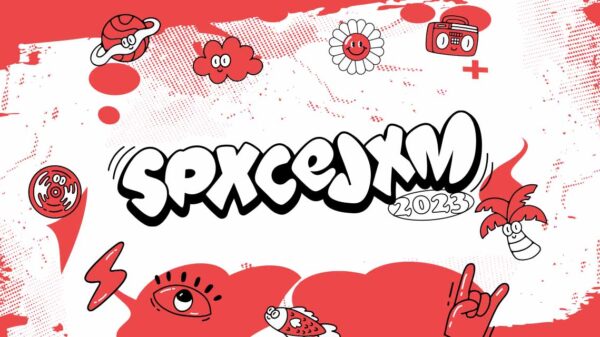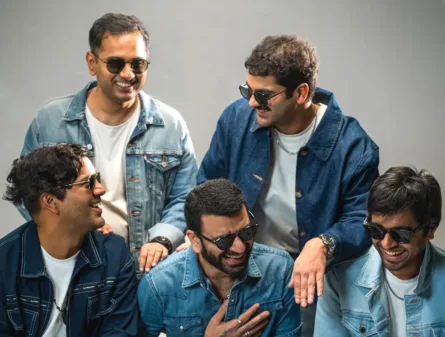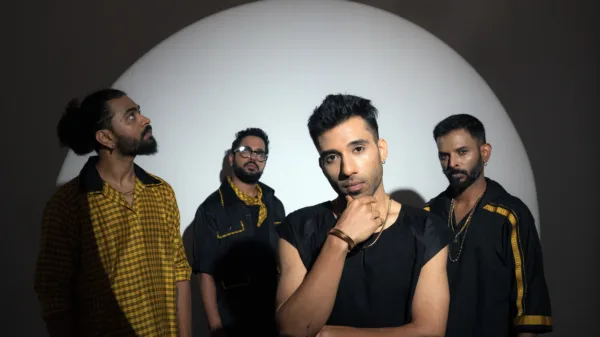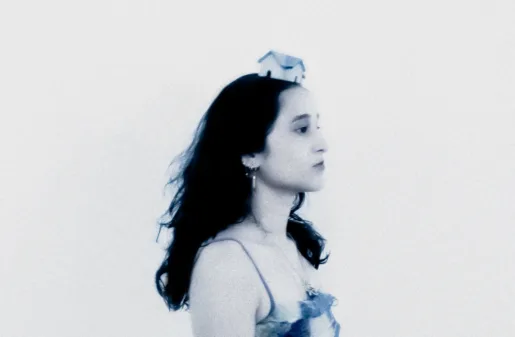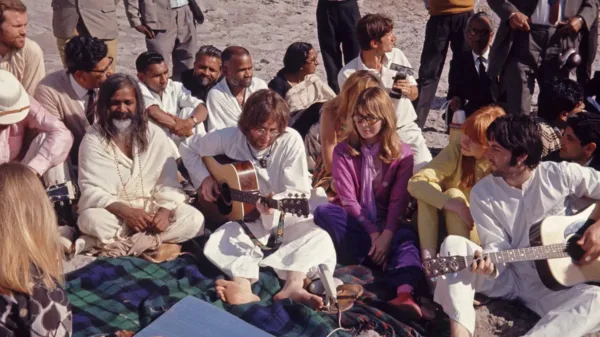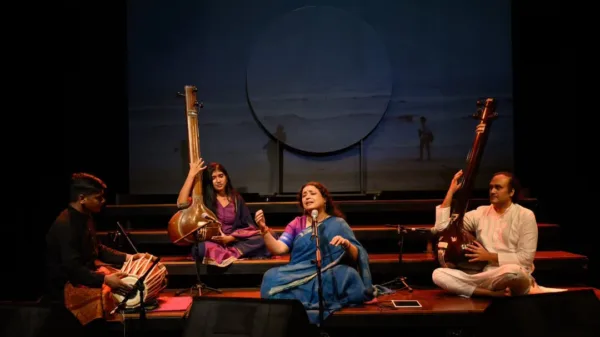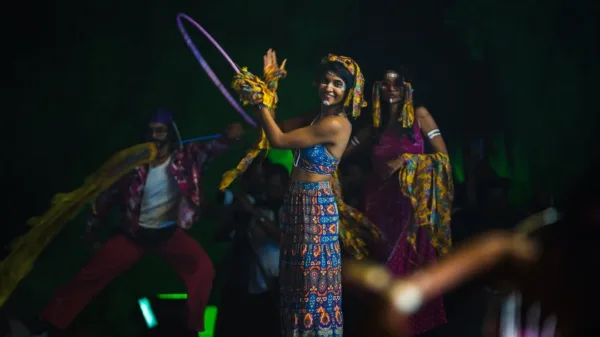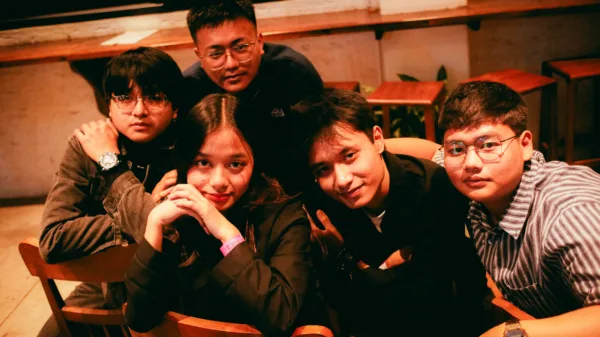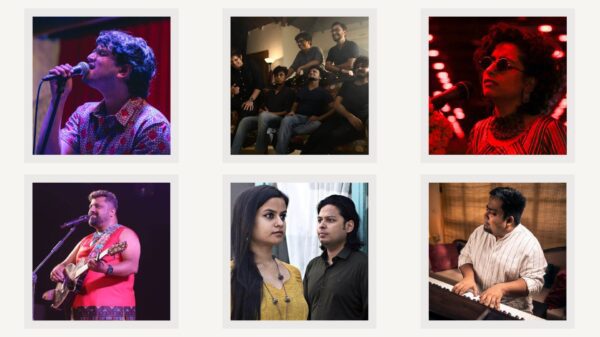Tech Panda and Kenzani are a contemporary producer duo from New Delhi known for their music that spans diverse sounds and decades. Their latest 21-track album ‘Tijori,’ sees the duo of Rupinder Nanda and Kedar Santwani take their time, weaving their way through voice samples, textures, sounds that are meditative and melodic to reach the dancefloor wherein they unleash a frenzy of energy.
‘Tijori’ was a process of going back to their roots, circling back to the idea which gave birth to their collaboration. The album is an unabashed nod to their love for Indian classical music, folk melodies, and electronic music. A compilation of 21 experiments across different spectrums of electronic music, in Tijori Indian instruments like sarangi and tabla sit front and center alongside Hindustani classical music vocals and folk songs on Chicago house, trap, garage, and techno tracks. In a conversation with us, they talk about how the album came about.
1) What is folktronica according to you?
Folktronica has been around for some time now. To us, it feels like it’s branched out now finally creating interesting soundscapes that were not thought to be possible earlier. To us, it the just the perfect effortless blend of traditional folk (or non-traditional) folk music that lays on a foundation of electronic music. Now this electronic music could be dubstep, minimal techno or even garage. As long as it manages to sound like a fleshed-out song, it counts as folktronica in our opinion.
2) How do you see the album impacting Indian electronic music?
More than anything, we think that it will motivate artists and producers around us to take more risks and create more non-formulaic music. It may even draw attention to the world while marking Indian electronica as a major genre. The album is a hypnotizing journey which dives deep into the beginning of Indian electronic music and progresses into more deliberate work from us. Since day one our mission was to spread the wave of Indian electronica, and we can safely say the wave has started!
3) You’ve experimented with various sub-genres of electronic music on ‘Tijori.’ How did you decide which styles would best complement the Indian elements?
As creative individuals, we both have different musical tastes, and it shows in this album. We didn’t want to hold each other back when it came to releasing a specific song as you never know which song works for the fans. Our duty as artists is to give them the reflection our souls.
The music-making process is almost always instinctive and spontaneous so planning a specific sub-genre for a song hardly happens. We simply paint what the song demands so we are open to the universe of soundscapes.
4) What challenges and opportunities do you see for Indian electronic music on the international stage?
It’s a double-edged sword – to stand out on the international stage, the output of music has to deliver in terms of sound and production. But if you can pull that off, then that is a huge market which can result in worldwide appreciation of your music. Indian electronica has to be displayed in a way that it doesn’t overpower the electronic part of the music. There is always a delicate balance that needs to be taken care of once this happens.

5) Do you see Tijori resonating with international audiences? What elements of the album do you think will appeal to a global listener?
Tijori has something for everyone. It was built this way. There are various tracks in the album that will click with global audiences. The diversity of genres makes it easy to digest for anyone who loves to hear hints of Indian sounds but sticks to maintaining its electronic core.
6) You’ve mentioned that the album is a journey through your evolution as musicians. Can you elaborate on how it represents your artistic growth so far?
When we started out, we worked on a lot of downtempo Indian electronica as we were completely locked in that zone. This was about five years ago. We enjoyed listening to and creating the atmospheric, dreamy electronic music. The best part was seeing our fans coming to the shows and enjoying our downtempo and chill tracks and really vibing to them. As time went by, we started enjoying tracks with more energy as we started playing festivals regularly. We incorporated our sound in a way that our songs could now be played at festivals as that was the need of the hour. The album Tijori resembles our journey that way as the first half of the album is on the downtempo side which gradually progressed into where we are today.
7) What was the creative process for a track like ‘Liquid Days’ where you blend sarangi with jazz?
A very precise representation of Tech Panda and Kenzani, we don’t want to leave any stone unturned when it comes to experimenting with sounds. It is something we wanted to try since a long time ago. We wanted to hear these kinds of songs but couldn’t find them. So, we created it!

8) How did the idea of including samples by artists like Rekha Bharadwaj and Flowdan come about? What was it about those particular segments/voices that stood out?
‘Pyaar Bhare’ was a song that was spontaneously made came to life when we heard Rekha Bhardwaj sing this. The instrumentals were built around her beautiful vocals. The song felt really complete after literally two days of work and hypnotized us every-time we heard it. ‘East meets west’ was a track made a year back, but we never got to release it until now. We stumbled upon Flowdan’s vocals which essentially made the track feel whole, so we went ahead with it.
9) How do you plan to take this album in a live setting? Are there any special performances planned?
We do have a few live sets coming up where we will be performing a few of these songs from Tijori.
10) How did you approach the sampling process for the album?
There’s a lot of trial and error in the sampling process. We have to scan through numerous samples to see what fits the bill. Sometimes at the end we replace the sample completely, feeling it is taking away the thunder from the specific song.
11) How do you see the future of Indian electronic music evolving? What role do you envision for yourself and ‘Tijori’ in this evolution?
The future of Indian electronic music looks promising. There are so many new artists who have jumped on this bandwagon, and we couldn’t be prouder! Every artist is bringing something new to the table and that’s just the beginning! Tijori will cement itself as work of art in the world of Indian electronic music in our opinion. At least that’s what we aimed to do with this album. We would love to keep expressing ourselves as we do and create new milestones that keeps inspiring the new generation of musicians. It is our duty as musicians to keep motivating the rising musicians and artists. India has a lot of to offer and contribute to on the global stage and this is just the beginning.




